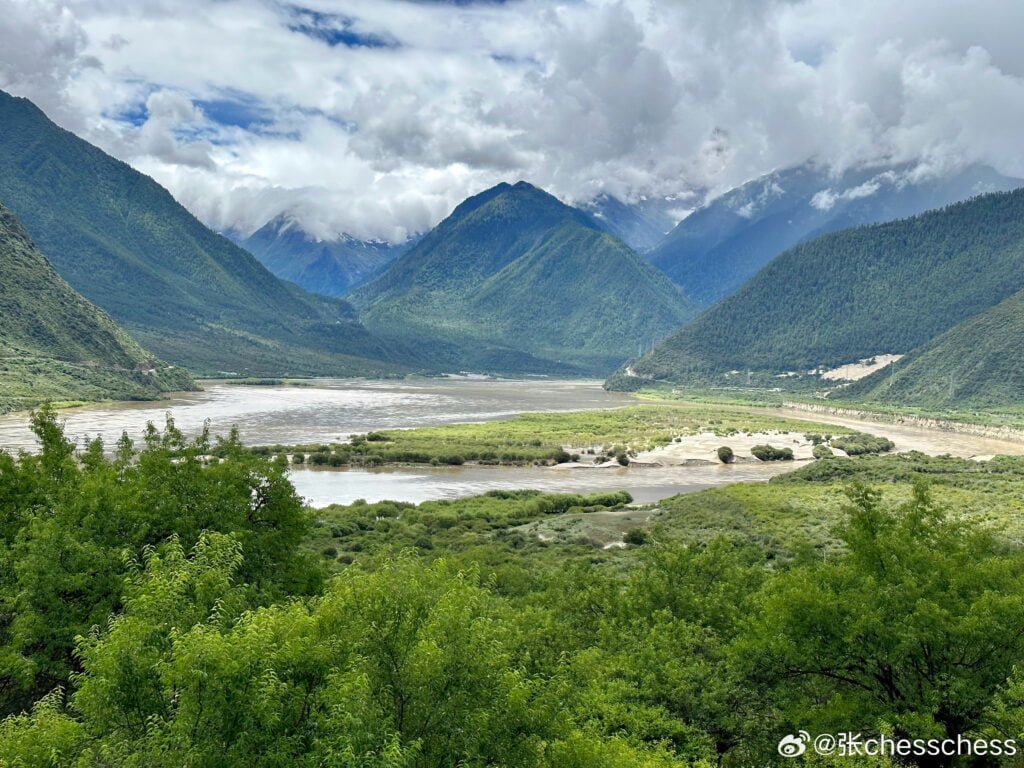Located near the village of Bonna, just 30 kilometers from Bayi Town at the foot of Sejila Mountain and alongside the Nyang River, stands Tibet’s largest known ancient mulberry tree. At an elevation of 2800 meters, this colossal tree, known in Tibetan as “Nari Ousu Shin,” reaches a height of 7.4 meters with a circumference of 13 meters. Originally boasting seven large branches at a height of 3.3 meters, it was sadly reduced to its main trunk in 1959 during road construction. Still, its main trunk holds over 40 cubic meters of wood.

Experts estimate the tree to be over 1600 years old, believed to have been planted by King Songtsen Gampo and Princess Wencheng to celebrate their marriage. This tree, once towering up to 20 meters with a vast canopy providing shade for over 100 people, symbolizes good fortune for the villagers of Bonna. It serves as the centerpiece for the “Fruit Watching Festival” in late summer and early autumn, where villagers gather to sing and dance beneath its sprawling branches.
The Legend of the Mulberry Tree
Long ago, two young shepherds, tasked with herding for their lord in this barren land, stumbled upon a lush ancient tree. In their quest to feed their livestock, they risked climbing the steep cliffs to chop it down, only to lose their animals to the winds. After days of fruitless searching, overwhelmed by despair and a burning passion, one wished aloud to become a mulberry tree—and so they did. This act transformed the landscape into a verdant paradise, where the lost animals, now eternal snow and stone, rest beneath the mulberry leaves. The abundant mulberries, like teardrops, are said to be the tears of the lovers, earning these trees the name “Lovers’ Mulberry.”

Tips for Visiting
- Access: The ancient mulberry tree is located on the old riverbed of the Nyang River, managed by the local Dawagebu family. A 30-kilometer drive from Bayi Town to Bonna Village brings you to this natural monument.
- Travel Advice: Visitors can hire a car or drive themselves to witness this marvel. The Bonna Ancient Mulberry Tree is not just a testament to the region’s rich biodiversity but also a beacon of cultural heritage and folklore in Nyingchi, Tibet.
The Bonna Ancient Mulberry Tree invites travelers to explore the deep roots of Tibet’s history and culture, standing as a timeless witness to centuries of stories, traditions, and natural beauty.

